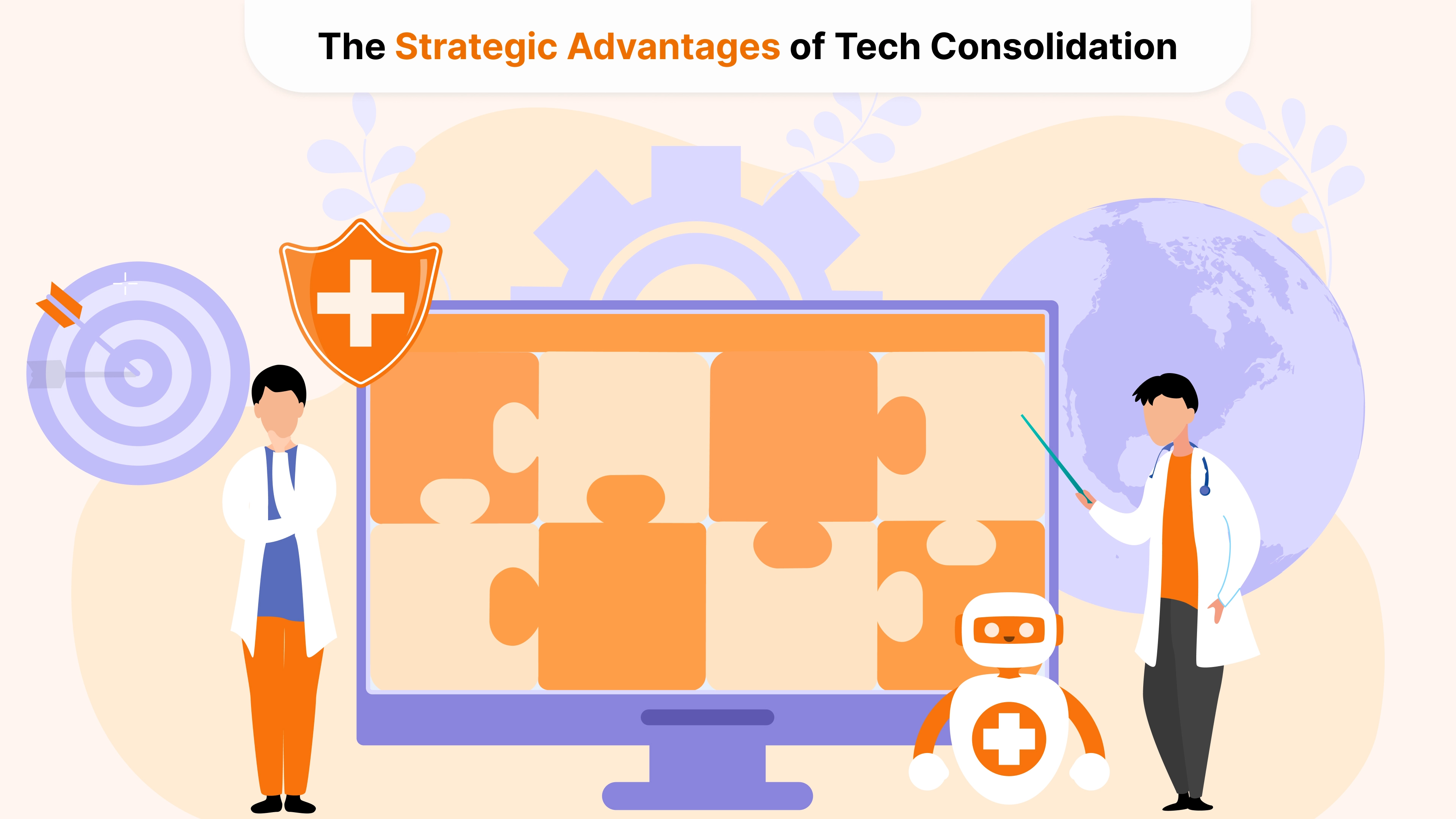

The Benefits of Tech Consolidation for Healthcare
In today’s rapidly evolving healthcare landscape, many organizations are grappling with tech sprawl — an overabundance of software, tools, and platforms that complicate clinical workflows and increase operational inefficiencies. To address this, healthcare IT leaders are increasingly opting for tech consolidation as a strategic move to streamline operations, modernize infrastructure, and reduce costs.
Recent trends reflect a growing focus on infrastructure modernization. According to projections, worldwide IT spending is expected to reach nearly $5 billion by the end of 2024, encompassing investments in data centers, software, and IT services. While this growth signals progress, it also contributes to the issue of tech sprawl, where organizations acquire new tools rapidly without ensuring compatibility. This problem has become evident in healthcare, where managing and securing multiple applications across disparate platforms often overwhelms IT teams.
A report from Zylo highlights that, in 2024 alone, an average of $18 million has already been wasted on inefficient SaaS management. This inefficiency has pushed organizations to make fewer but more strategic decisions about their tech investments. As healthcare organizations aim to optimize resources, they are increasingly turning to tech consolidation, particularly within electronic health records (EHR) systems and other core healthcare IT platforms. The goal is clear: simplify clinical workflows, improve care delivery, and enhance operational efficiency.
Why Healthcare Organizations Are Streamlining Their Infrastructure
Tech consolidation takes two primary forms. One is the drive to merge entire businesses or departments, maximizing economies of scale and boosting productivity. This approach often emerges from a desire to increase market power and operational efficiencies. However, a more pressing strategy in healthcare involves consolidating disparate technologies into a unified ecosystem.
By integrating multiple services into a consolidated framework, healthcare organizations achieve several key benefits. A unified system enables better observability, flexibility, and interoperability, ensuring that software and hardware are compatible across the board. This interoperability reduces the risk of outdated systems causing disruptions, while also supporting smoother updates to IT infrastructure.
In a healthcare environment, outdated hardware or software can slow down operations and even impact patient care. Consolidation helps eliminate redundant systems and ensures IT environments are optimized for current and future needs. Reducing tech sprawl is critical as every new tool introduced into an organization demands time, resources, and security measures. Without careful oversight, IT teams become burdened with managing an increasingly complex and bloated tech stack, leading to wasted budgets and inefficiencies. A study on IT asset management suggests that approximately one-third of spending on IT — whether for desktop software, SaaS, or data center services — is wasted.
To counter this, organizations are now making proactive efforts to trim software expenses by up to 30%, with reports indicating an average tech cost of $3,500 per employee. The focus is shifting towards a transparent evaluation of return on investment (ROI), as well as a more strategic approach to managing software licenses and hardware upgrades. Ninety-five percent of senior IT executives report plans to consolidate vendors within the next year, while three-quarters of organizations are specifically targeting cybersecurity vendor consolidation, streamlining their approach to mitigate emerging digital threats more effectively.
The Strategic Advantages of Tech Consolidation

The benefits of tech consolidation in healthcare are significant. By centralizing technologies, organizations can enhance their cybersecurity posture, allowing them to collectively share intelligence and respond to threats in real time. With fewer disparate systems, IT teams can prevent zero-day threats and reduce vulnerabilities that might otherwise be exploited through unmonitored systems.
Furthermore, consolidating IT infrastructure reverses the hidden costs associated with tech bloat — such as runaway software expenses and frustration among staff who have to navigate overly complex systems. A simplified, unified platform can also address the issue of shadow IT, where individual departments implement their own unregulated solutions. Gartner predicts that by 2027, up to 75% of employees will have engaged in shadow IT practices, underscoring the need for central oversight to prevent these risks.
A consolidated ecosystem also offers greater flexibility in integrating both cloud and on-premises systems, which is crucial in today’s hybrid healthcare environments. By reducing the number of tools that need to be managed, healthcare IT teams can improve visibility across the organization, leading to better resource allocation, faster troubleshooting, and more seamless workflows. This streamlining can be especially helpful when balancing emerging technologies such as telehealth, remote patient monitoring, and AI-driven diagnostics, which require robust, interoperable systems to function efficiently.
Healthcare organizations looking to optimize their tech stacks should consider working with technology partners that can assist in evaluating and eliminating redundant software and hardware. By reducing unnecessary tech spend, funds can be reallocated to forward-thinking investments that support long-term growth and better patient outcomes. This shift towards consolidation is more than just a cost-cutting measure — it’s a strategic move that empowers healthcare providers to operate more efficiently and effectively in an increasingly digital world.
Faq
What is tech consolidation in healthcare?
+Tech consolidation in healthcare involves streamlining multiple software systems, tools, and platforms into a unified ecosystem. This reduces IT complexity, improves efficiency, and cuts costs. It also helps healthcare organizations enhance care delivery by simplifying workflows.
How does tech consolidation benefit healthcare organizations?
+Tech consolidation reduces redundant systems, improves cybersecurity, and enhances operational efficiency. It also allows IT teams to manage fewer tools, resulting in better visibility, faster troubleshooting, and optimized resource allocation. Ultimately, it helps lower overall IT expenses.
What are the challenges of tech sprawl in healthcare?
+Tech sprawl complicates clinical workflows and adds unnecessary costs to healthcare operations. Managing multiple incompatible systems burdens IT teams with increased security risks and inefficiencies. Tech consolidation solves these issues by creating a more streamlined and manageable IT environment.
Tell us about your project
Fill out the form or contact us

Tell us about your project
Thank you
Your submission is received and we will contact you soon
Follow us
